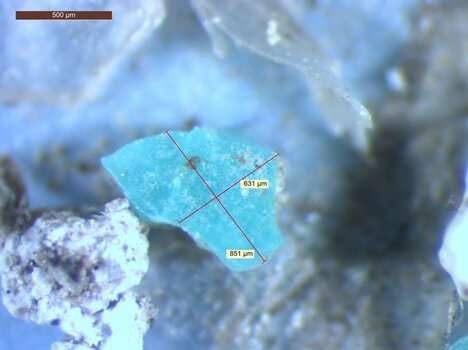The missing ocean 'plastic sink'

Plastics are a growing problem for natural ecosystems around the globe, and in particular for our marine and freshwater environments. Rivers are the leading source of plastic pollution, as it has been estimated that they deliver several million metric tons of plastic annually to our oceans from poor land-based waste management. The problem is that the estimates made for plastics flowing from the rivers are tens to hundreds of times higher than the quantity of plastics floating on the ocean's surface. So where is all of this river-derived plastic actually going—is there a missing plastic 'sink' somewhere in the ocean? Are the estimates correct?
In a paper published today in Science, Dr. Lisa Weiss and her colleagues from the Centre of Education and Research on Mediterranean Environments (CEFREM), a joint research laboratory between the University of Perpignan (UPVD) and the French National Centre for Scientific Research (CNRS), and a team of researchers from a number of research institutions in France and the University of Barcelona in Spain demonstrate that current river flux assessments are overestimated by two to three orders of magnitude from previous estimates. This would explain why a large volume of microplastics seems to disappear into a mysterious ocean 'plastic sink'.
However, these findings do not suggest that plastics are less of a problem than previously thought. In fact, through their analyses, researchers actually found that plastics remain at the ocean's surface much longer than previously estimated—further exacerbating the effects of plastic pollution on natural systems.
The mysterious ocean plastic sink
Rivers are the main source of plastic discharge into the oceans. According to current assessments, the floating stock of microplastics on the ocean's surface—from tens to hundreds of metric tons—is just a small fraction of the millions of metric tons that are discharged by rivers each year. This unequal balance has led to the 'plastic sink' hypothesis whereby the amount of microplastics in the 'plastic sink' plus the plastics at the surface would equal those presumably discharged by rivers into the sea.
According to the study's lead author Dr. Lisa Weiss from the CEFREM laboratory at the University of Perpignan, "The in situ data that we now have for microplastics in rivers, compared to early empirical modeling studies, allowed us to assemble a robust database which we were then able to analyze to obtain a more reliable estimate for the quantity of microplastics being discharged from rivers into the sea. This process revealed several significant methodological errors in previous flux estimates. When we then corrected these mistakes we found that the global river flux estimates are two to three orders of magnitude less than previously thought. Further, we found that the average residence time for microplastics at the surface of the oceans may actually be a few years as opposed to only several days, as previously estimated."
"We can now confirm that the search for the missing 'plastic sink' is over, as the missing plastics have been found through the correction of the river flux estimate," states Professor Miquel Canals, head of the Consolidated Research Group on Marine Geosciences at the University of Barcelona and one of the co-authors of the study.
The new study identifies the main methodological mistakes which led to inaccurate assessments of the fluxes and overall mass of microplastics discharged by rivers into the sea at a global scale. In particular, mistakes were made because of a systematic overestimation of the average microplastic particle weight in river samples; from the integration of incompatible data that were obtained through different sampling techniques; and from assessments based on the relation between microplastic fluxes and the MPW index (mismanaged plastic waste).
A fight without borders to preserve our planet's oceans
Marine waste does not care about borders and has reached the most remote corners of our oceans and seas. According to Dr. Wolfgang Ludwig, the Director of the CEFREM laboratory and co-author of the study, "the only way we are going to have a chance at winning the fight against microplastic pollution will be to target the sources where microplastic waste is generated. We need to take action at the human level. We need to change our consumption habits, better manage our waste and we need to do this at a global scale."
"Our study shows that marine microplastic pollution not only comes from developing countries—with little to no waste management—as one might think, but also comes from countries with well-established waste management systems. If we were to stop the discharge of microplastics from rivers to the sea today, the amount of floating particles and their harmful effects on marine ecosystems would persist for at least another several years," states Dr. Ludwig.
The impacts of plastics on the marine environment is an emerging field of scientific research that has generated a large number of scientific publications over the last few years. Still, we have only just begun to understand how plastics cycle in the oceans. There are many plastic size classes, oceanic compartments and land-to-sea transfer processes for which further research is urgently needed to properly evaluate the stock sizes and exchange fluxes between compartments. Going forward, we will need the best available science if we are to have a chance at winning the battle against plastic pollution. To do this, the scientific community must work together to overcome inertia from the past, correct mistakes and work with common protocols and guidelines in order to provide the best possible decision-making advice needed to protect our oceans and seas.
More information: Lisa Weiss et al, The missing ocean plastic sink: Gone with the rivers, Science (2021). DOI: 10.1126/science.abe0290
Journal information: Science
Provided by University of Barcelona




















